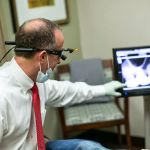Raising Awareness of Gum Disease: A Crucial Step for Oral Health
Education plays a vital role in empowering individuals to understand and prevent gum disease. By providing clear and accessible information, we can help people make informed decisions about their oral hygiene and overall well-being.
Using Simple Language and Visual Aids
To make the concept of gum disease more understandable, it's essential to use simple language. Instead of complex medical terms like "periodontitis," say "advanced gum disease." Additionally, visual aids such as diagrams and intraoral camera images can bring the idea of gum disease to life, making it less abstract and more tangible for patients.
Highlighting the Consequences
Patients need to be aware of the serious risks associated with untreated gum disease. This includes tooth loss and its connection to systemic health problems like heart disease and diabetes. Understanding these potential consequences can motivate them to take preventive measures.
Routine Screenings and Standardized Treatment Plans
Regular periodontal screenings are crucial for early detection. These include probing and charting. Based on the diagnosis, standardized treatment plans should be developed, tailored to the individual needs of each patient to ensure they receive appropriate care.
Ongoing Maintenance and Follow-ups
After treatment for periodontal disease, scheduling regular follow-ups and maintenance visits is essential to prevent recurrence. This ongoing care helps monitor gum health and ensures long-term oral health.
Diagnostic Methods
Periodontal probing to measure pocket depths, radiographs to assess bone loss, and clinical examinations to look for signs of gum recession, bleeding, and inflammation are all important diagnostic tools in identifying gum disease.
Treatment Options
Non-surgical treatments like scaling and root planing remove plaque and tartar from below the gumline. In more advanced cases, surgical treatments may be necessary to reduce pocket depth or regenerate lost bone and tissue.
Effective Communication with Patients
When communicating with patients, it's important to clearly identify issues, explain the condition, emphasize the benefits of treatment, and address their concerns. This builds trust and encourages them to actively participate in their oral health care.
Educational Materials and Seminars
Providing brochures, posters, and videos in the waiting area and hosting patient seminars can enhance patients' knowledge of gum disease and its prevention. Social media campaigns can also be utilized to share valuable information and success stories.
Testimonials and Success Stories
Real-life experiences from satisfied patients and dental professionals highlight the positive impact of raising awareness and providing effective treatment for gum disease.
Research and Resources
References to various studies and resources further emphasize the importance of gum disease awareness and education, providing a solid foundation for understanding and combating this common oral health issue.
In conclusion, raising awareness about gum disease through education is a powerful tool for promoting oral health. By understanding the causes, consequences, and prevention strategies, individuals can take proactive steps to protect their gums and overall well-being. Regular dental check-ups, proper oral hygiene, and informed decision-making are key to preventing and managing gum disease. Let's work together to spread the word and improve oral health for all.

 ATI Dental Care
ATI Dental Care Kalil Dental Group
Kalil Dental Group James. A. Stevens, DMD - Family Dental Practice
James. A. Stevens, DMD - Family Dental Practice Forsyth Dental Partners, Inc.
Forsyth Dental Partners, Inc. Pratte John DDS
Pratte John DDS Diamond Braces Orthodontist: Braces & Invisalign
Diamond Braces Orthodontist: Braces & Invisalign The Importance of Oral Health Education During Pregnancy for a Healthy Pregnancy
The Importance of Oral Health Education During Pregnancy for a Healthy Pregnancy Why Skipping Dental Checkups Can Lead to Bigger Oral Health Problems
Why Skipping Dental Checkups Can Lead to Bigger Oral Health Problems Advantages of Porcelain Dental Restorations
Advantages of Porcelain Dental Restorations Best Tips for Brushing Your Teeth Properly for Healthy Gums: Essential Techniques for Oral Health
Best Tips for Brushing Your Teeth Properly for Healthy Gums: Essential Techniques for Oral Health How Can Diabetes Cause Tooth and Gum Problems? Preventing and Managing Oral Health Issues
How Can Diabetes Cause Tooth and Gum Problems? Preventing and Managing Oral Health Issues Healthy Habits for Promoting Good Oral Health and Hygiene: Tips for a Healthy Smile
Healthy Habits for Promoting Good Oral Health and Hygiene: Tips for a Healthy Smile